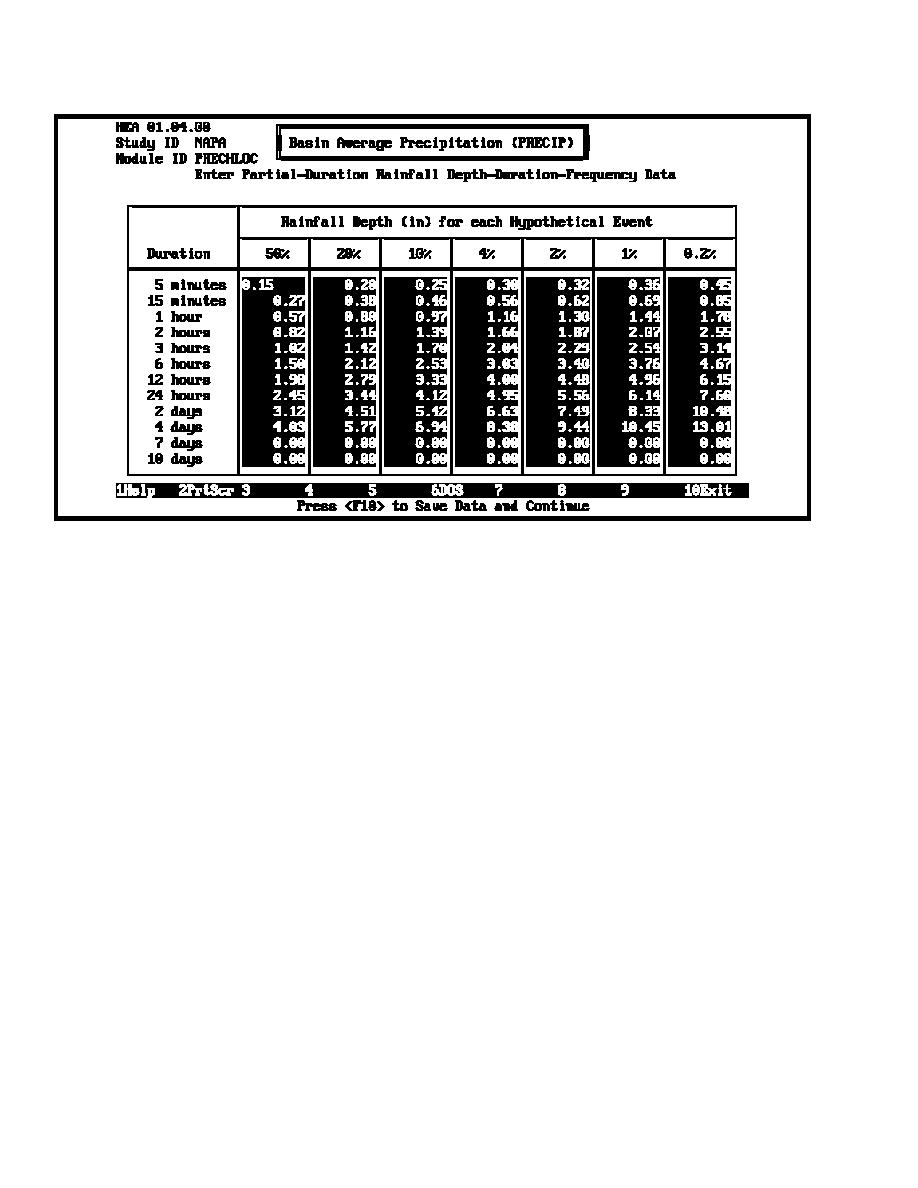
ETL 1110-2-367
31 Mar 95
Figure D-3. Interior area hypothetical precipitation data
represent sewered urban runoff. Therefore, the kinematic wave
constant for all hypothetical events. These loss rates were
HEC-1 model was used with 1 in. of runoff to generate
consistent with those used by the district in previous studies
composite unit hydrographs for each interior area. Clark unit
and were considered reasonable for the highly urbanized
hydrograph parameters TC and R were estimated from these
areas. As expected, the HEA loss rates, which are
kinematic wave unit hydrographs using the parameter estimation
representative of rare single events, are lower than the CSA
capability in the HEC-1 program. These unit hydrograph
rates. Peak interior runoff using the described adopted loss
parameters were used in HEC-IFH for computing runoff from
rate parameters was compared for CSA and HEA. Peak
the interior area during hypothetical event and continuous
interior flow-frequency relationships for CSA and HEA are
simulation analysis.
shown in Figure D-6 and compared closely for moderately
rare events. This further substantiates the reasonableness of
(2)
The initial and uniform loss rate model was used
adopted parameters.
for both CSA and HEA. There are no stream gauges in the
interior area so calibration of runoff parameters was not
(3)
No base flow was specified for either CSA or HEA.
possible.
Other methods were used to ensure the
Base flow was considered to have little or no impact on peak
reasonableness of the parameters as described below.
runoff or volume for these small interior areas. Some runoff
parameters for Interior Area 5 are shown in Figure D-7.
(a) For CSA, the initial loss was 0.4 in. and the uniform
loss was 0.02 in. per hour. The monthly initial loss recovery
(4)
No routing was used between the upper and lower
rate for CSA was 0.04 in. per day. Test simulations with
subareas for Interior Area 5 due to the short travel time and the
different initial loss recovery rates for CSA showed that peak
fact that the area is heavily sewered.
interior runoff was not sensitive to this parameter. Examination
of monthly precipitation, loss, and percent loss is possible in
(5)
The interior runoff computation time was 15 min
HEC-IFH and helps verify the reasonableness of selected loss
for CSA and 5 min for HEA. The times of concentration for the
rates (see Figure D-5).
upper and lower subbasins for Interior Area 5 were 0.79 and
1.1 hr, respectively. Accordingly, these time intervals were
(b)
For HEA the adopted initial loss was 0.2 in. and the
considered adequate to define the runoff hydrographs at the
uniform loss was 0.02 in. per hour. These loss rates were held
outlets.
D-4



 Previous Page
Previous Page
